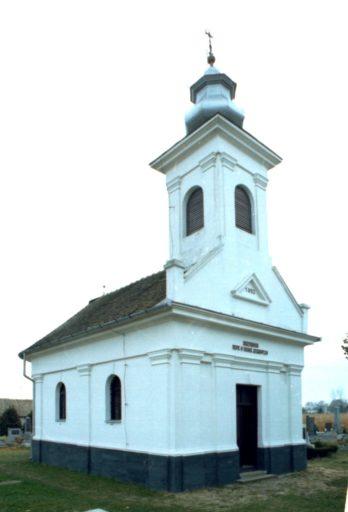The oldest Serbian families who settled in Ada during the Great Emigration of Serbs under Arseny Carnojevic were: Dudvarski, Nikolići, Marjanovići, Sijački, Sedmakovi (Seven inhabitants), Jakovljevići and others. After pushing the Turks south of the Sava and the Danube, the Potisko-Maritime military landscape loses its strategic importance. The Austrian authorities tried to make the Serbian borders more barrier to the feudal system of the Monarchy. Serbian officers donated noble titles and feudal positions, while ordinary soldiers received small concessions by reducing their obligations within the privileged Crown DISTRICT.
In 1751, former spokesman Nikola Dudvarski, his wife Marta Lukina, the children Petar, Joka and Ana, received the noble title with the coat-of-arms. The announcement was published in Bačka County in 1752. Nikola Dudvarski, as a former soldier, or military border officer, received a property in Ada. During the earthly list of nobles 1754/55. In the name of Nikola Dudvarski, the name of the noble Bač County was introduced. His son, Alexander Dudarsky, was a lieutenant in the county rebel army in 1809. Thanks to successful management Nikola Dudvarski eventually became the richest spahi of his region.
The patron of the construction of the Dudvarski chapel at the Orthodox cemetery in Ada is Petar Dudvarski (Georgi’s son) and his wife, Polka, born in Riđica. Addressing Church Church – school municipality Petar Dudvarski, a wealthy landowner, he prays that he is allowed to lift a chapel of hard material on the Orthodox cemetery. In the “Basic Letter” it is stated that the ktitor takes over all obligations related to the construction, decorating and equipment of the chapel to the church worms. A Chapel Committee of 9 members was established, which supervised the construction of the chapel and later managed and took care of its maintenance. In point 2 of the “Basic Letter”, the headmaster states that, as soon as the chapel is ready for payment, 1,000 forints will be paid to the Serbian Orthodox Church, and later will leave a significant part of the country’s walnuts to the “Chapel Maintenance Fund”.
Chapel dedicated to “Transferring the relics of St. father of Nikolai “at the Orthodox cemetery in Ada was built in 1892. It was built of solid material with stylistic characteristics of neoclassicism. The chapel is a one-nave, longitudinal, smaller, church building with a semicircular apse on the east and a bell-tower that rises from the front, to the west.
The wall canvas along the entire building is flat, without decoration. Above the glaze, which ends with the pronounced profiling, the only decorative element that repeats on all the facades is pilasters with semicolons. On the façade, with a central flat-entry entrance, with the “toothed” in the middle are four pilasters. At the height of the half-scapula, the two centers connect a straight profile above which in the field stands the Cyrillic script: PETER AND POLISH DUDARIAN. Above the flatly profiled crown of the façade, two columnar square bases mark the triangular field into which a part of the belfry corps has drowned. In the central part of that field, the year of the construction of the chapel – 1892 was inscribed in a triangularly wired area. The edges of the bell tower emphasize pilasters identical to those on the facades of the building, and windows with arched ceiling and blinds.
The south and north facade have two arched windows, and the identical window appears on the apse. On the southern facade, the entrance to the crypt is placed in rizalit, with a final corrugated line covered with sheet metal and with iron door. Immediately from the entrance to the crypt in the façade, a tombstone of Peter and Poljka Dudvarski was placed. It is a type of a plinth-patchy monument with two columns that rest on an elevated postament, and support the profiled archivolte on which the cross is placed.
The roof is two-pipe, covered with pepper tile, and the correct apron is over the apse.
Inside there is the iconostasis, probably the work of a local anonymous author. It was made without a cut, painted at the end of the XIX century, with oil on canvas.


0 comments on “Dudvarski Chapel”